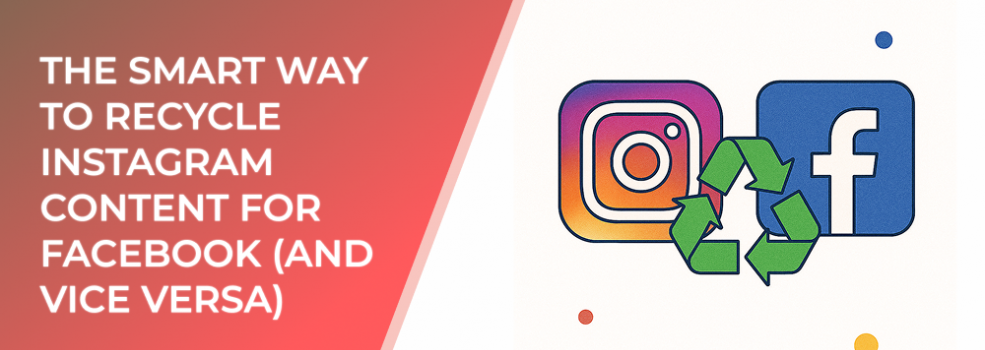Producing fresh content for multiple social platforms can be overwhelming. According to Social Media Today, 60% of marketers say creating enough content is their biggest challenge. Recycling content between Instagram and Facebook allows businesses to repurpose existing assets, extend their shelf life, and improve ROI without sacrificing quality.
Both platforms are part of the Meta ecosystem, meaning cross-platform content strategies are not only efficient but also highly effective when executed correctly.
1. Adjust Format for Platform Specs
While Instagram is optimized for vertical visuals (4:5 or 9:16), Facebook often performs best with square (1:1) or horizontal (16:9) formats. When recycling content, adapt the aspect ratio to suit each platform’s feed and placement for better engagement.
2. Repurpose Stories into Reels or Videos
An Instagram Story can easily be turned into a Facebook Reel or video ad. This allows businesses to extend the reach of short-form content that otherwise disappears after 24 hours.
3. Turn Instagram Carousels into Facebook Albums
Carousel posts with multiple images can be reshaped into Facebook albums. This format encourages clicks and browsing, keeping audiences engaged longer on the platform.
4. Cross-Promote User-Generated Content
If customers share testimonials or product photos on Instagram, recycle them as Facebook posts with added context. Research shows that user-generated content boosts engagement by up to 29% compared to branded-only content.
5. Convert Long Captions into Facebook Posts
Instagram captions are often concise due to attention spans, while Facebook posts can accommodate longer storytelling. Expand captions into detailed narratives when recycling Instagram content for Facebook.
6. Use Facebook Live Highlights on Instagram
Clips from Facebook Live sessions can be repurposed into Instagram Reels or Stories. Highlighting key moments increases exposure while catering to Instagram’s preference for short, dynamic content.
7. Schedule Smartly with Cross-Posting Tools
While Meta allows auto-cross-posting, it’s best to adjust copy, hashtags, and visuals slightly for each platform. This avoids redundancy and ensures the post feels tailored.
8. Maintain Consistency Without Fatigue
Avoid over-recycling by spacing out reposts. A piece of content shared on Instagram today can be introduced to Facebook audiences a week later, keeping engagement fresh without overwhelming followers.
Final Thoughts
Smart recycling doesn’t mean duplicating—it’s about adapting. By reshaping Instagram and Facebook content for platform-specific strengths, brands can maximize visibility, save time, and create a consistent user experience across both channels.

